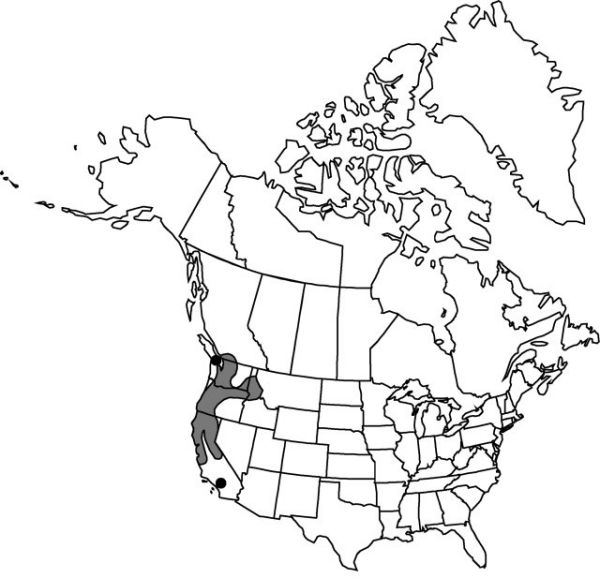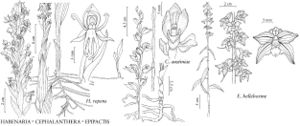familyOrchidaceae
subfamilyOrchidaceae subfam. Epidendroideae
genusCephalanthera
speciesCephalanthera austiniae
Cephalanthera austiniae
Cat. N. Amer. Pl. ed. 2, 4. 1900.
Common names: Phantom orchid snow orchid
IllustratedEndemic
Basionym: Chloraea austiniae A. Gray Proc. Amer. Acad. Arts 12: 83. 1877 (as austinae)
Synonyms: Eburophyton austiniae (A. Gray) A. Heller
Treatment appears in FNA Volume 26. Treatment on page 584.
Plants pure white, 19–65 cm. Leaves proximally reduced to scarious sheathing bracts, to 10 cm, distally reduced to bracts, pure white, becoming brown. Inflorescences: floral bracts scarious, the proximal often foliaceous, distal usually reduced, lanceolate, apex acuminate. Flowers ascending, loosely open orbs, white with yellow markings; sepals lance-elliptic, 12–20 × 4–7 mm, base spread, curving forward to meet but not touch, apex obtuse to subacute; petals oblanceolate, arcuate, 10–17 × 3–6 mm, associated with dorsal sepal; lip 8–12 × 9–14 mm, lateral lobes flanking column, distal end deflexed, yellow centrally. Capsules erect, ellipsoid-oblanceoloid, 15 × 10 mm.
Phenology: Flowering summer.
Habitat: Mineral soil in dry to moist coniferous forests
Elevation: 0–2200 m
Distribution
Loading map...

B.C., Calif., Idaho, Oreg., Wash.
Discussion
Selected References
None.
Lower Taxa
None.
